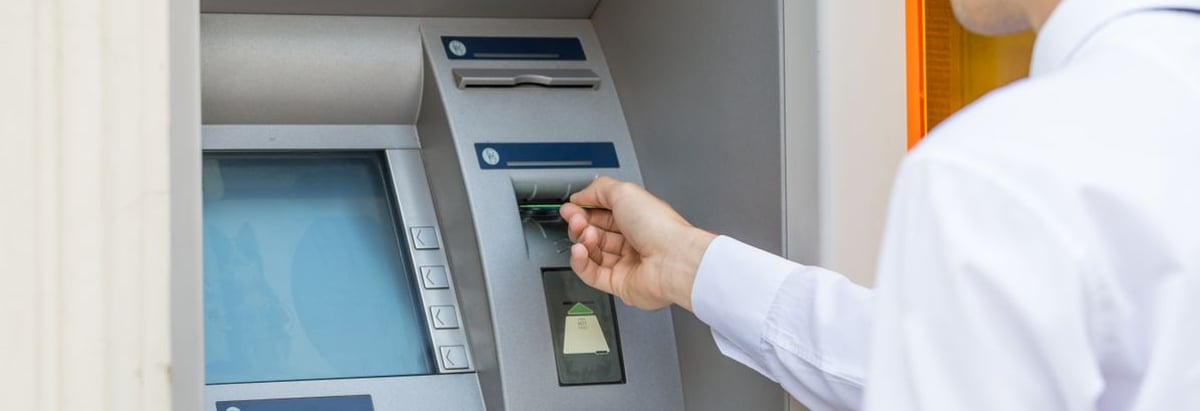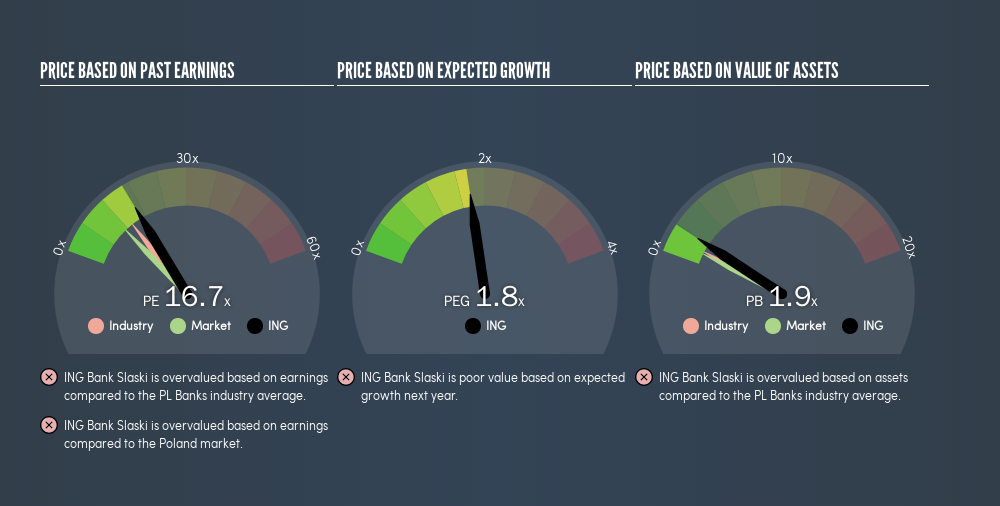
Today, we'll introduce the concept of the P/E ratio for those who are learning about investing. We'll apply a basic P/E ratio analysis to ING Bank Slaski S.A.'s (WSE:ING), to help you decide if the stock is worth further research. Based on the last twelve months, ING Bank Slaski's P/E ratio is 16.75. That corresponds to an earnings yield of approximately 6.0%.
Check out our latest analysis for ING Bank Slaski
How Do You Calculate ING Bank Slaski's P/E Ratio?
The formula for P/E is:
Price to Earnings Ratio = Share Price ÷ Earnings per Share (EPS)
Or for ING Bank Slaski:
P/E of 16.75 = PLN196.4 ÷ PLN11.73 (Based on the trailing twelve months to December 2018.)
Is A High Price-to-Earnings Ratio Good?
The higher the P/E ratio, the higher the price tag of a business, relative to its trailing earnings. That is not a good or a bad thing per se, but a high P/E does imply buyers are optimistic about the future.
How Growth Rates Impact P/E Ratios
P/E ratios primarily reflect market expectations around earnings growth rates. That's because companies that grow earnings per share quickly will rapidly increase the 'E' in the equation. That means unless the share price increases, the P/E will reduce in a few years. A lower P/E should indicate the stock is cheap relative to others -- and that may attract buyers.
ING Bank Slaski saw earnings per share improve by -8.8% last year. And earnings per share have improved by 9.7% annually, over the last five years.
How Does ING Bank Slaski's P/E Ratio Compare To Its Peers?
One good way to get a quick read on what market participants expect of a company is to look at its P/E ratio. The image below shows that ING Bank Slaski has a higher P/E than the average (13.7) P/E for companies in the banks industry.

Its relatively high P/E ratio indicates that ING Bank Slaski shareholders think it will perform better than other companies in its industry classification. Clearly the market expects growth, but it isn't guaranteed. So investors should always consider the P/E ratio alongside other factors, such as whether company directors have been buying shares.
A Limitation: P/E Ratios Ignore Debt and Cash In The Bank
It's important to note that the P/E ratio considers the market capitalization, not the enterprise value. Thus, the metric does not reflect cash or debt held by the company. Hypothetically, a company could reduce its future P/E ratio by spending its cash (or taking on debt) to achieve higher earnings.
Such expenditure might be good or bad, in the long term, but the point here is that the balance sheet is not reflected by this ratio.
So What Does ING Bank Slaski's Balance Sheet Tell Us?
ING Bank Slaski's net debt is 5.9% of its market cap. So it doesn't have as many options as it would with net cash, but its debt would not have much of an impact on its P/E ratio.
The Bottom Line On ING Bank Slaski's P/E Ratio
ING Bank Slaski has a P/E of 16.7. That's higher than the average in the PL market, which is 11.2. With debt at prudent levels and improving earnings, it's fair to say the market expects steady progress in the future.
Investors should be looking to buy stocks that the market is wrong about. If the reality for a company is better than it expects, you can make money by buying and holding for the long term. So this freereport on the analyst consensus forecasts could help you make a master move on this stock.
You might be able to find a better buy than ING Bank Slaski. If you want a selection of possible winners, check out this freelist of interesting companies that trade on a P/E below 20 (but have proven they can grow earnings).
We aim to bring you long-term focused research analysis driven by fundamental data. Note that our analysis may not factor in the latest price-sensitive company announcements or qualitative material.
If you spot an error that warrants correction, please contact the editor at editorial-team@simplywallst.com. This article by Simply Wall St is general in nature. It does not constitute a recommendation to buy or sell any stock, and does not take account of your objectives, or your financial situation. Simply Wall St has no position in the stocks mentioned. Thank you for reading.
About WSE:ING
ING Bank Slaski
Together with our subsidiaries, provides various banking products and services for retail clients and businesses in Poland.
Established dividend payer with adequate balance sheet.
Market Insights
Community Narratives





